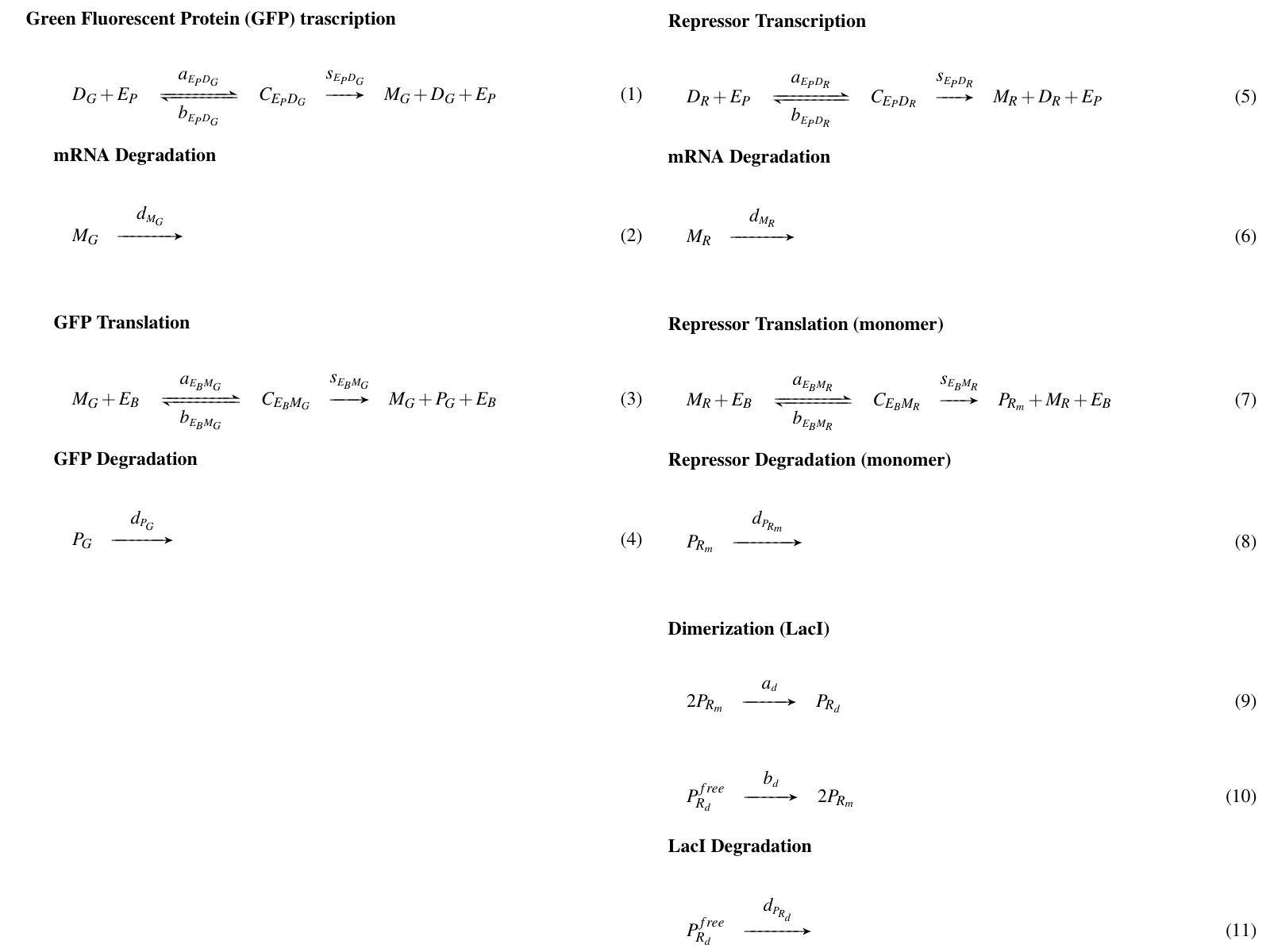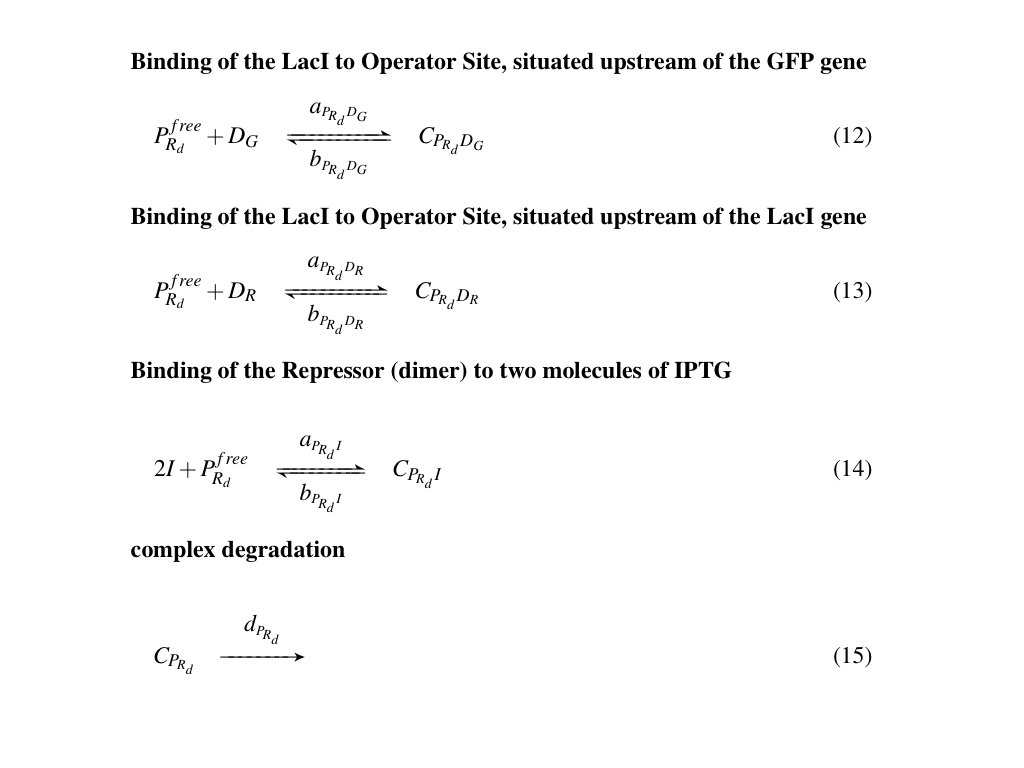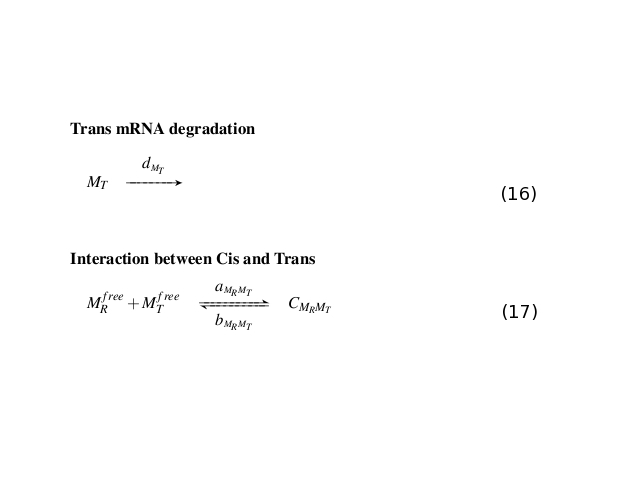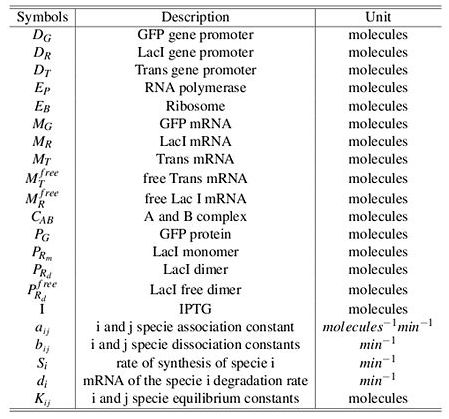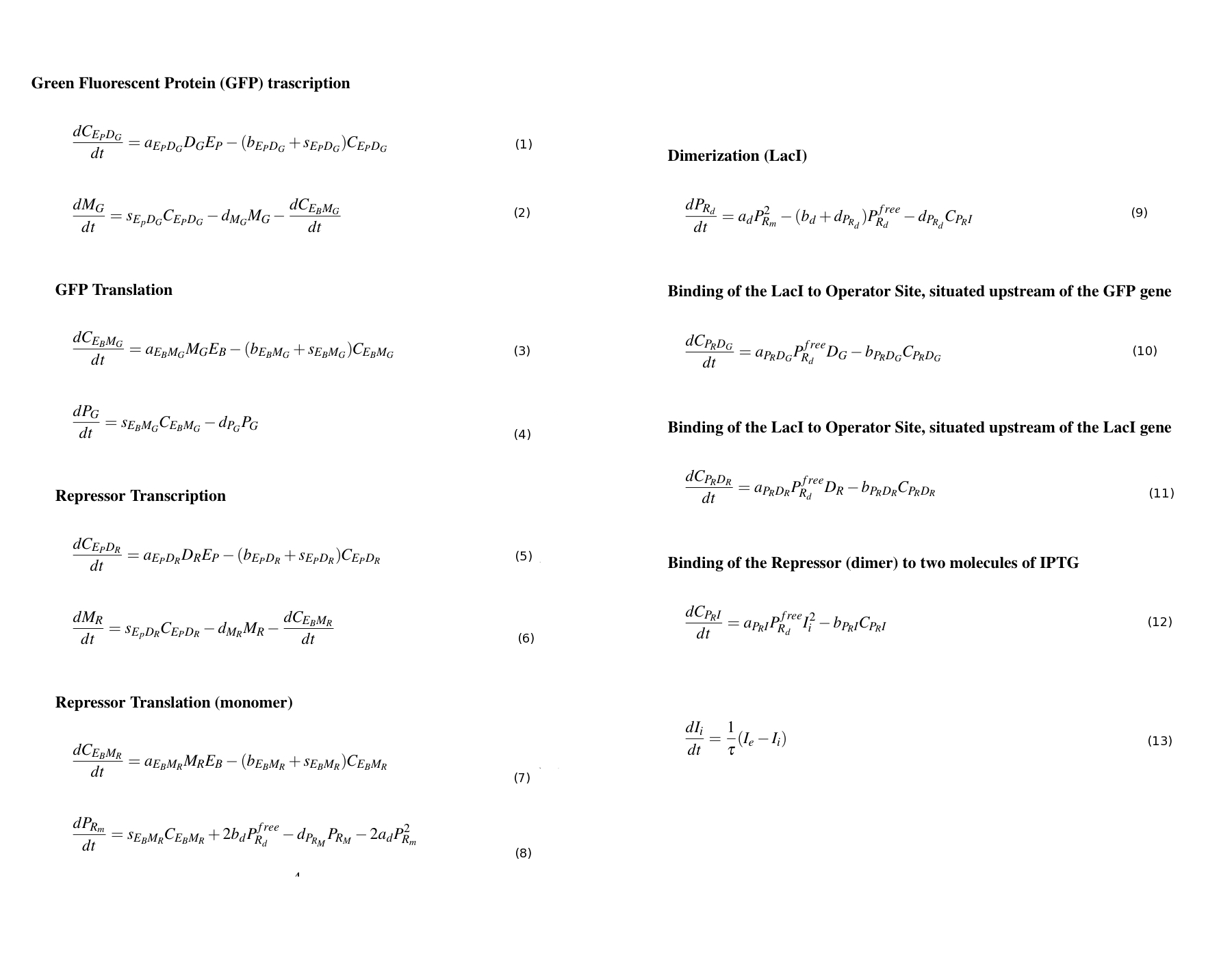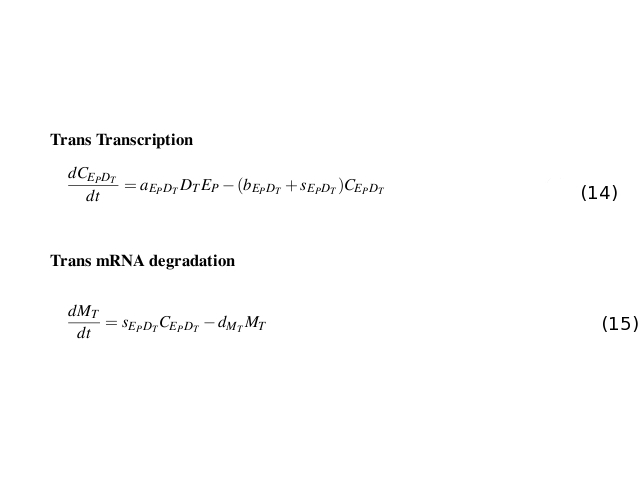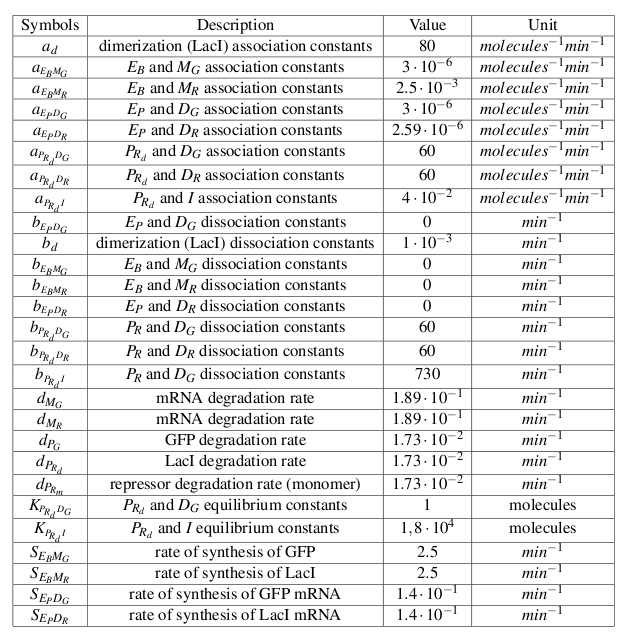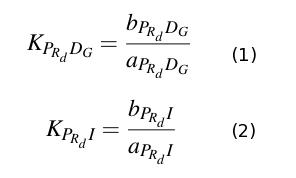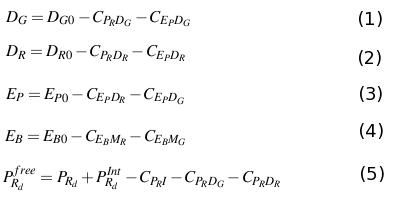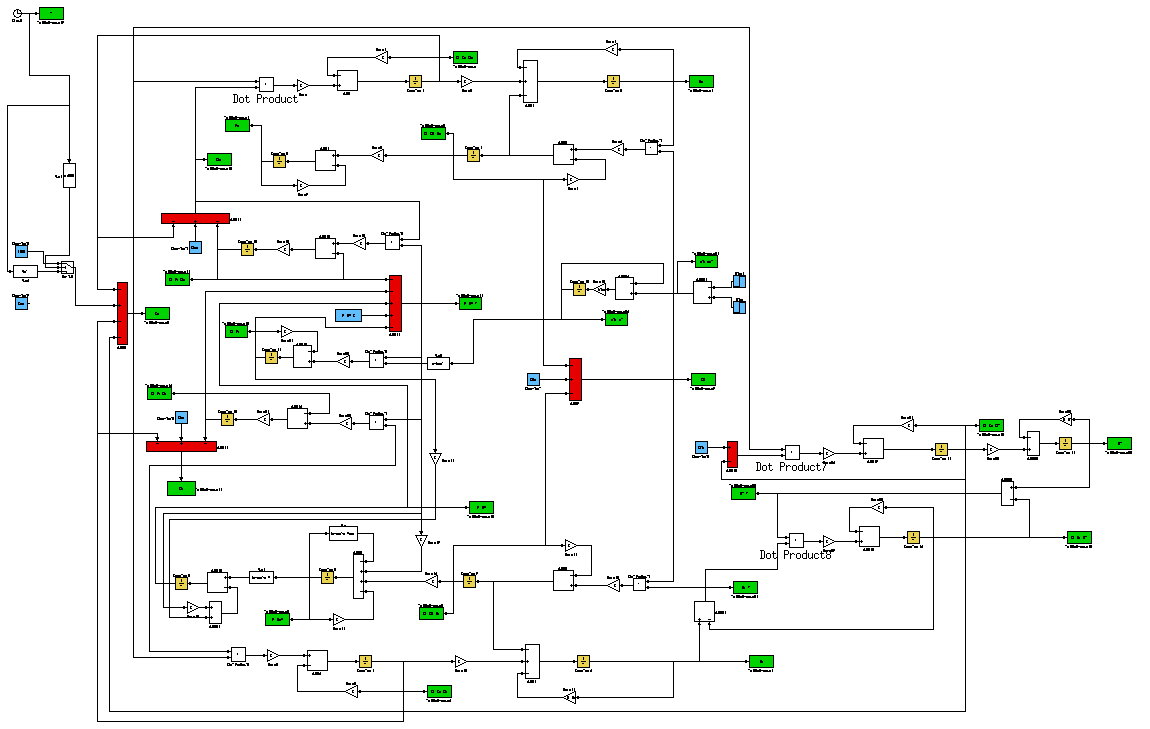Team:Bologna/Modeling
From 2009.igem.org
| HOME | TEAM | PROJECT | SOFTWARE | MODELING | WET LAB | PARTS | HUMAN PRACTICE | JUDGING CRITERIA |
|---|
A. Einstein
Contents |
Introduction
We developed a mathematical model to simulate the response of the testing circuit (Fig. 1):
Mathematical Model
The mathematical model is based on the law of mass action, and the transcription and translation process, are considered similar to enzymathic reactions.
In this context, RNA polymerase and ribosome perform enzymes' role, while gene promoter and RBS sequence act as substrates.
The interaction between enzyme and substrate leads to the formation of a complex, yielding to the final product: mRNA for the polymerase-promoter complex and protein for ribosome-RBS complex.
</font>
Reactions
Here below (Fig. 1, Fig. 2 and Fig. 2) are listed all the reactions included in the model of the testing circuit.
Symbol definitions are listed in Table 1
Differential Equations
Differential equations, that describes the project, are obtained appling the law of mass action at the reactions above.
Simulations
We realized the below Simulink model with the differential equations in figure 3 and 4.
 "
"


